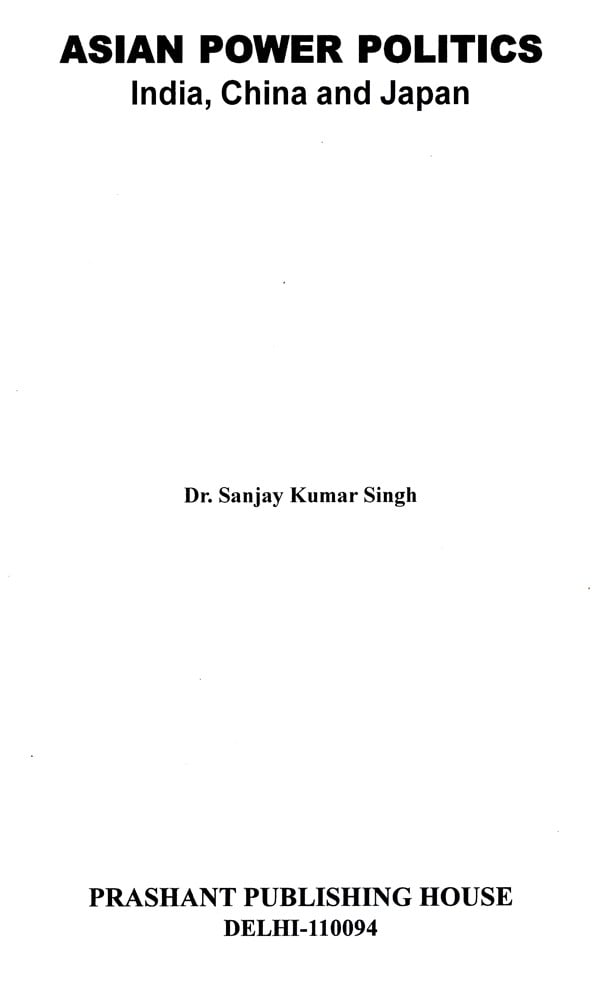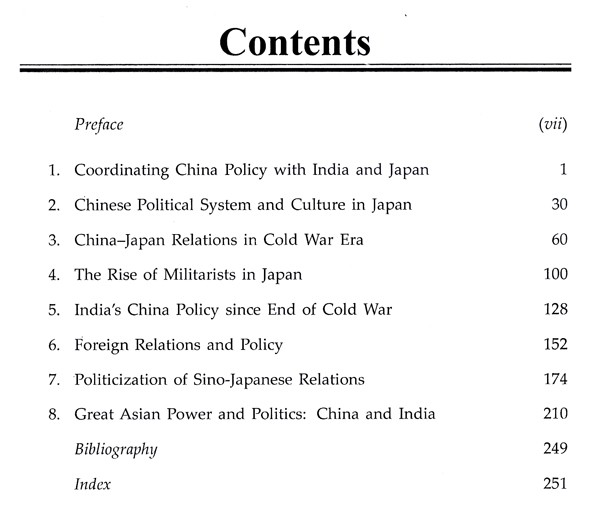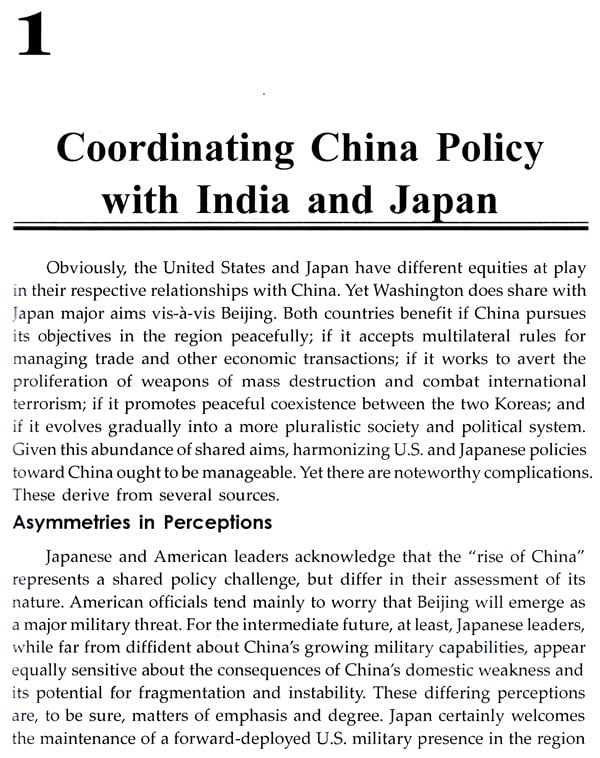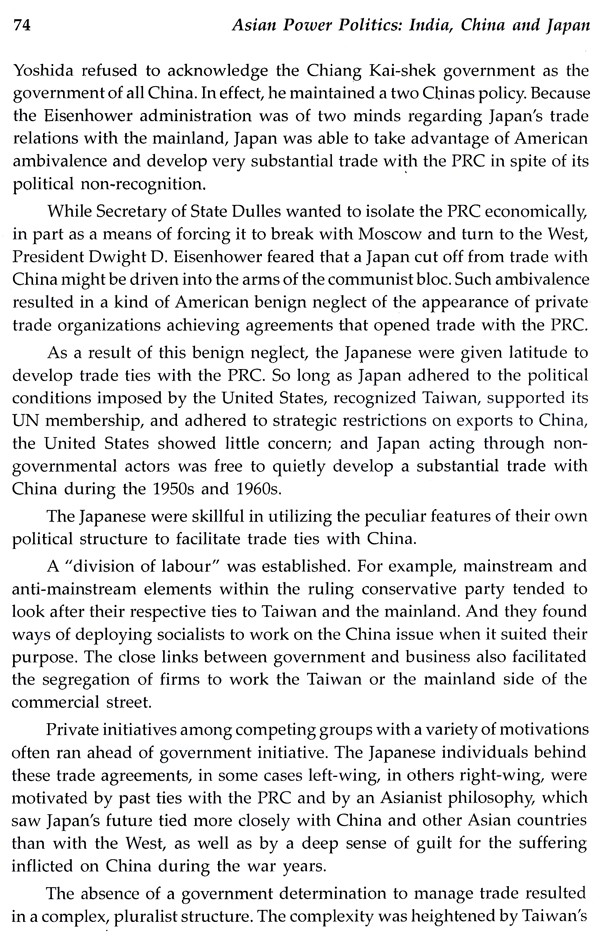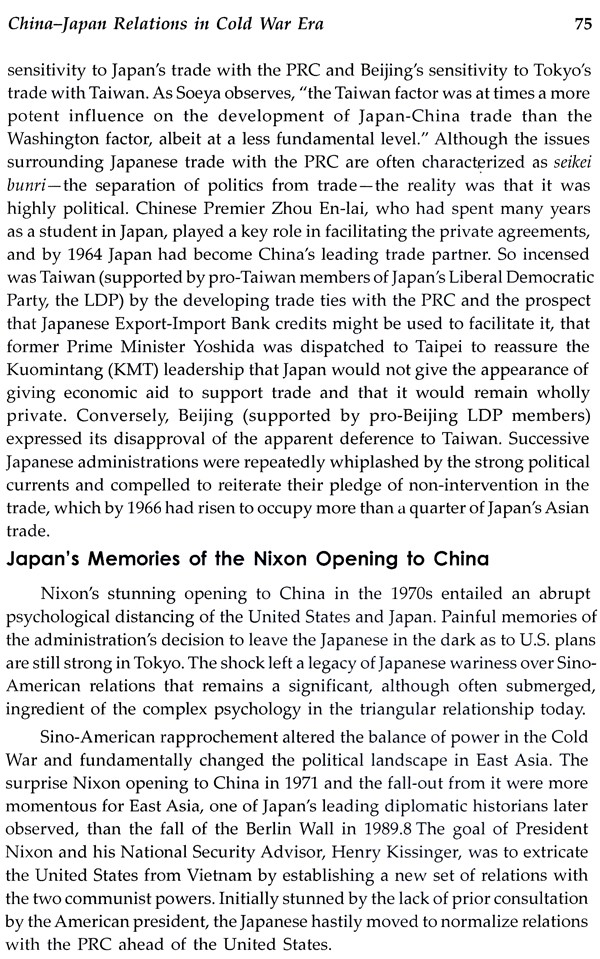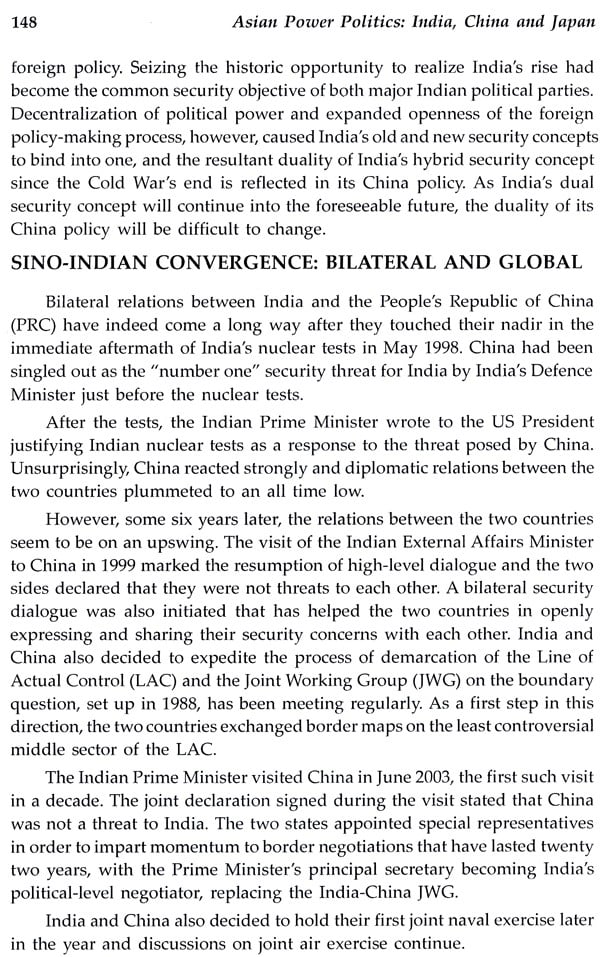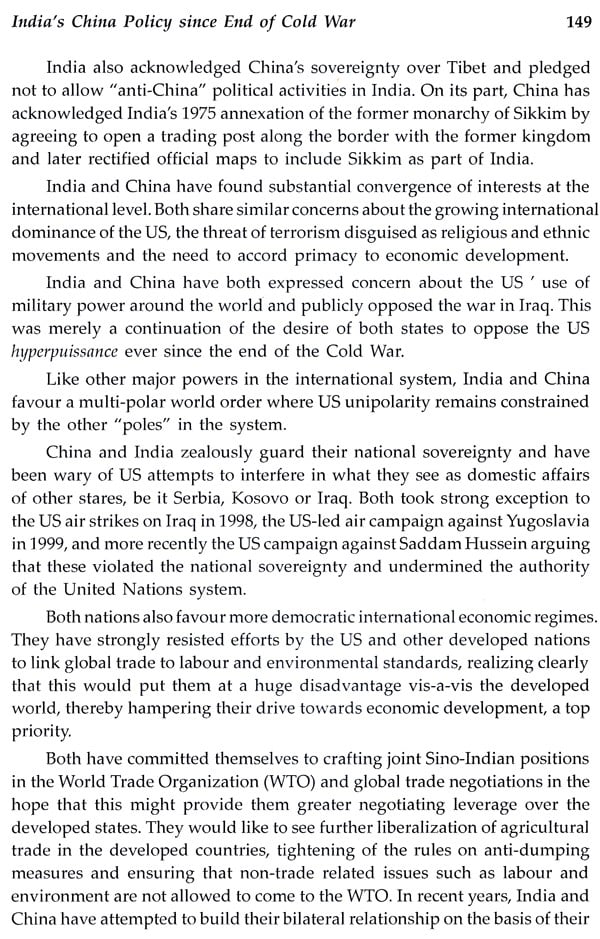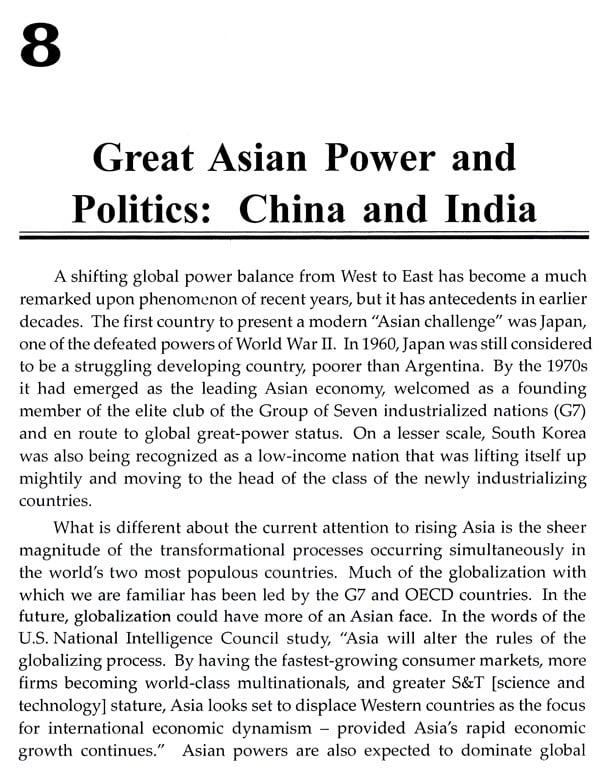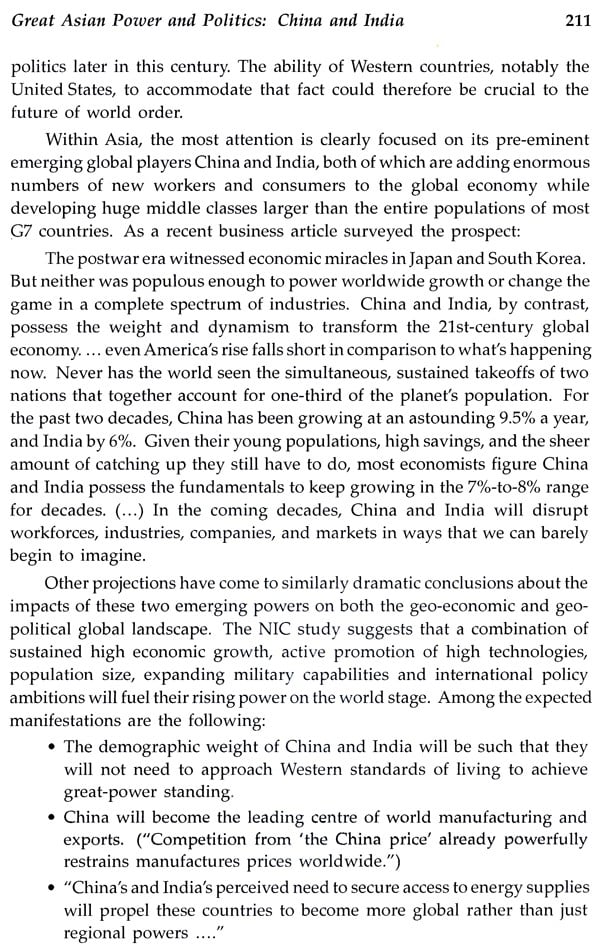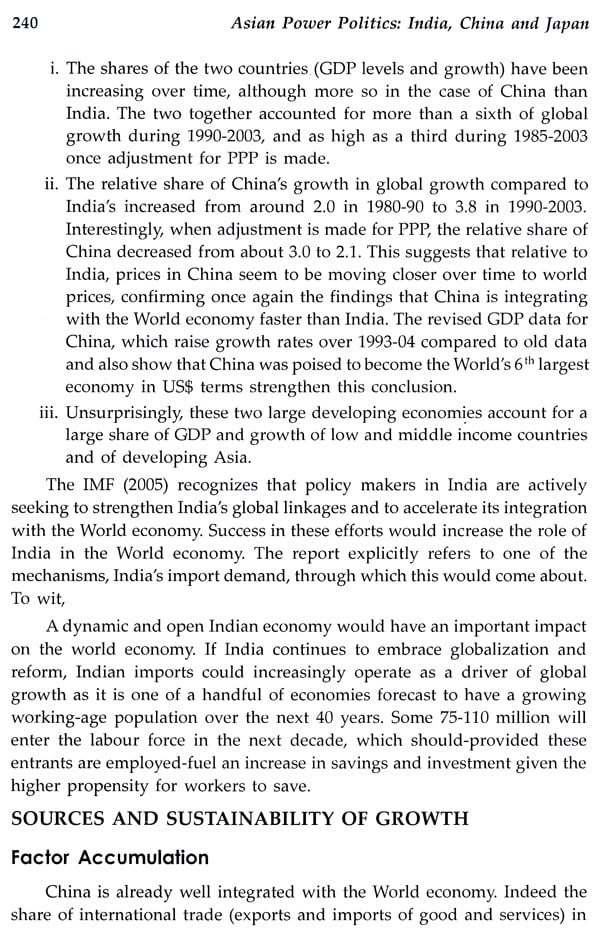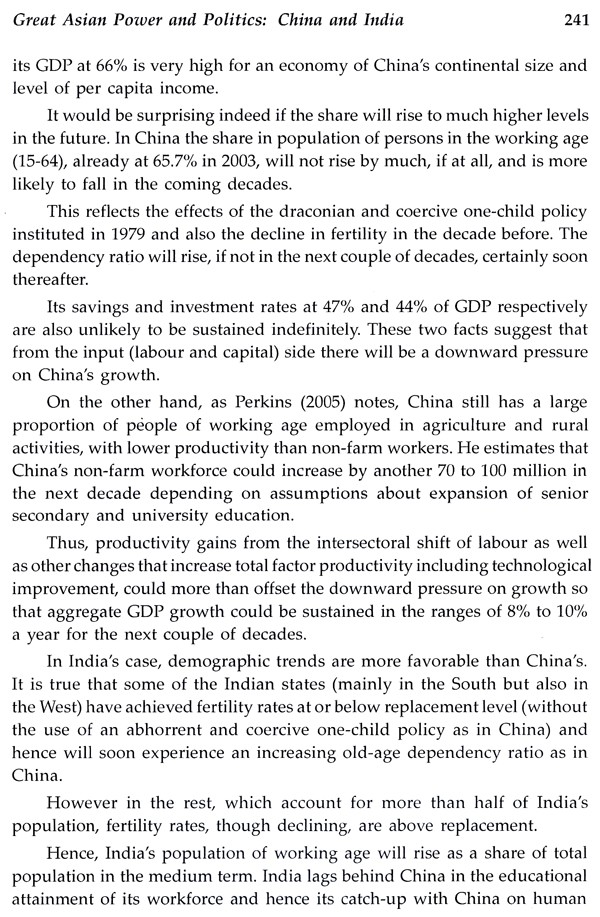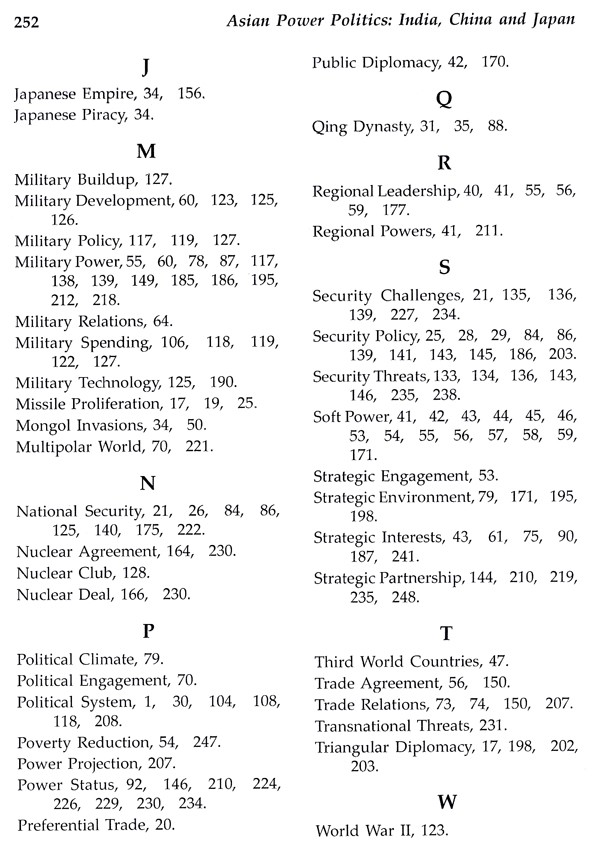
Asian Power Politics: India, China and Japan
Book Specification
| Item Code: | UAU135 |
| Author: | Sanjay Kumar Singh |
| Publisher: | Prashant Publishing House, Delhi |
| Language: | English |
| Edition: | 2021 |
| ISBN: | 9788195292318 |
| Pages: | 252 |
| Cover: | HARDCOVER |
| Other Details | 9.50 X 6.50 inch |
| Weight | 620 gm |
Book Description
The prospect that China and Japan could both be powerful and affluent at the same time has only recently emerged, largely because while China's economy and influence have grown rapidly, Japan's have remained stagnant. China has nuclear weapons and intercontinental ballistic missiles, and its military budget has grown by double-digit rates for 17 consecutive years. Japan is today unquestionably India's preeminent economic partner. For PM Modi as a committed moderniser of India's social and economic landscape, the inauguration of the Ahmedabad-Mumbai high speed rail project carries special significance in the building of a 'New India'. The project will lead to a quantum jump in technology, skills and domestic capacity at the highest end of manufacturing. China and Japan are geographically separated by the East China Sea. Japan has been strongly influenced by China with its language, architecture, culture, religion, philosophy, and law. China-Japan relations now stand at a new juncture after more than a decade of turbulence and nearly two years of recovery since the end of the Cold War. Whether China, India and Japan-major powers in East Asia-will be able to establish a comprehensive strategic relationship of mutual benefit and realise long-term friendship and cooperation in the new conditions will affect not only the destinies of the two countries but the future of the region and the world at large. Present book has been complete to cater to the requirements of the teachers, researchers and students.
The prospect that China and Japan could both be powerful and affluent at the same time has only recently emerged, largely because while China's economy and influence have grown rapidly, Japan's have remained stagnant. China has nuclear weapons and intercontinental ballistic missiles, and its military budget has grown by double-digit rates for 17 consecutive years. Japan is today unquestionably India's preeminent economic partner. For PM Modi as a committed moderniser of India's social and economic landscape, the inauguration of the Ahmedabad-Mumbai high speed rail project carries special significance in the building of a 'New India'. The project will lead to a quantum jump in technology, skills and domestic capacity at the highest end of manufacturing. China and Japan are geographically separated by the East China Sea. Japan has been strongly influenced by China with its language, architecture, culture, religion, philosophy, and law. China-Japan relations now stand at a new juncture after more than a decade of turbulence and nearly two years of recovery since the end of the Cold War. Whether China, India and Japan-major powers in East Asia-will be able to establish a comprehensive strategic relationship of mutual benefit and realise long-term friendship and cooperation in the new conditions will affect not only the destinies of the two countries but the future of the region and the world at large. Present book has been complete to cater to the requirements of the teachers, researchers and students.
**Contents and Sample Pages**
